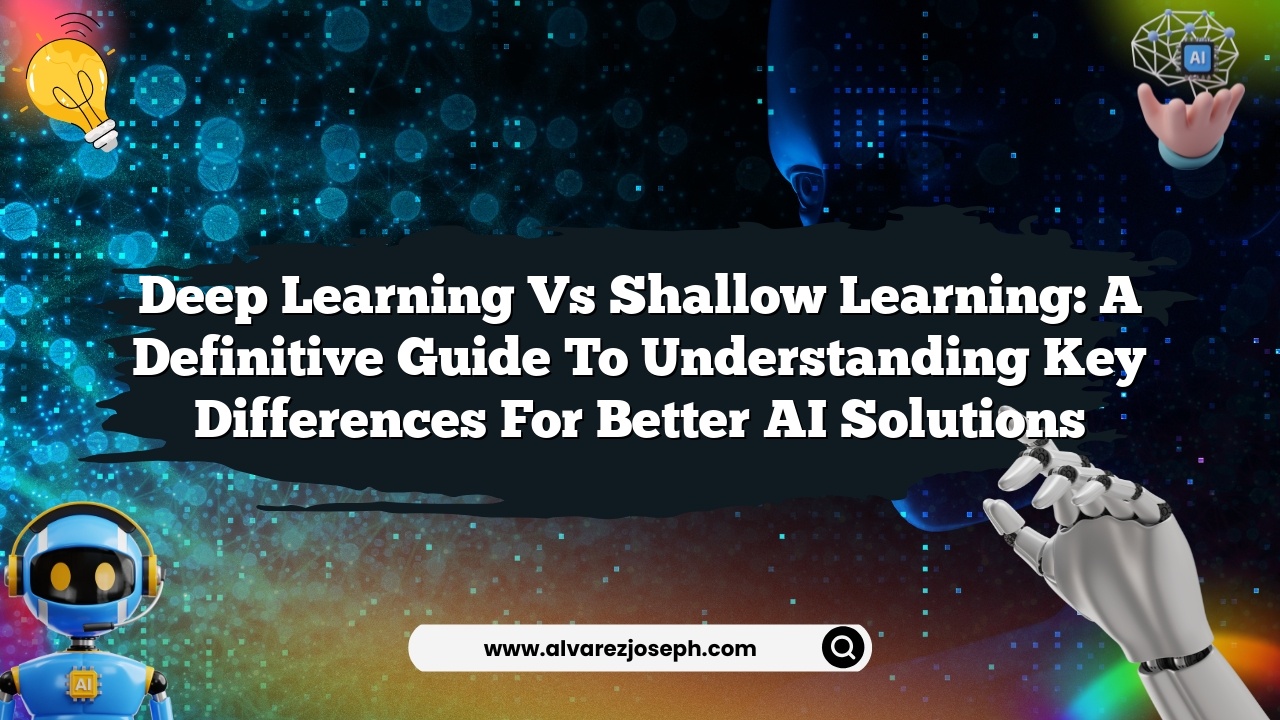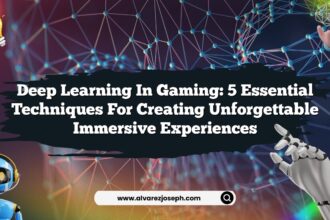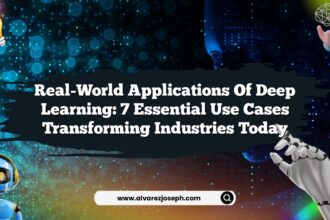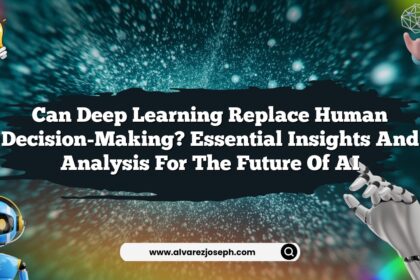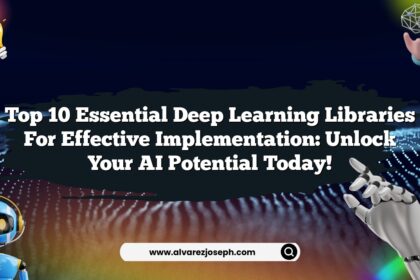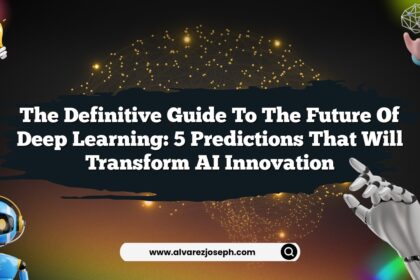Deep learning and shallow learning—these terms might sound like they’re straight out of a tech fairy tale, but they represent two fundamental approaches to artificial intelligence that shape our digital world. Picture a world where machines not only understand our commands but learn from their experiences, adjusting and improving over time. Intrigued? You should be! This exploration will take you deep into the heart of artificial intelligence, unraveling the mysteries of these two paradigms.
Let’s embark on this journey where we’ll spotlight the key differences between deep learning and shallow learning, unlock their potentials, and ultimately help you choose the right path for your AI solutions.
Understanding Shallow Learning
Shallow learning, often referred to as traditional machine learning, is like a good ol’ detective novel where the detective (the algorithm) analyzes clues (data) but relies on a human’s insight to draw conclusions. Here’s what you should know:
- Definition: Shallow learning is a type of machine learning that employs algorithms to extract patterns from data using a limited number of layers. Think of it as a straightforward recipe that doesn’t require fancy cooking techniques.
- Common Algorithms: Popular shallow learning algorithms include decision trees, support vector machines (SVM), and linear regression. Each has its strengths and weaknesses, essentially like choosing between coffee or tea—depends on your mood!
- Feature Engineering: In shallow learning, feature engineering is paramount. It means you have to spend time selecting and creating features from raw data that best represent the problem at hand. It’s like finding the perfect outfit for a first date—lots of thought goes into it!
But wait, there’s more! Shallow learning shines brightly in situations where you have structured data and clear relationships. For example, if you’re predicting housing prices based on square footage, number of bedrooms, and location, shallow learning could be your best friend.
The Power of Deep Learning
Now, let’s turn the spotlight on deep learning. Imagine a world where machines not only learn from data but evolve with it—like a growing tree that adapts to its environment. Here’s what sets deep learning apart:
- Definition: Deep learning involves neural networks with many layers (hence the term "deep"). These networks are designed to automatically learn from vast amounts of data without the need for extensive feature engineering.
- Complexity: The architectures of deep neural networks can be quite complex, resembling a multi-layered cake where each layer extracts different features from the data. This complexity allows deep learning models to capture intricate patterns and make sense of unstructured data like images, audio, and text.
- Data Requirements: One of the key differences is the amount of data needed. Deep learning thrives on large datasets—think of it as a voracious reader that consumes an entire library! If you have tons of labeled images or audio clips, deep learning is likely the way to go.
In a world increasingly driven by unstructured data, deep learning opens the door to possibilities that were previously unimaginable. From voice assistants that understand your commands to self-driving cars, deep learning is redefining what’s possible.
Comparing Deep Learning and Shallow Learning
Now that we’ve laid the groundwork, let’s compare these two paradigms head-to-head. Grab your popcorn; this is where the fun begins!
| Aspect | Shallow Learning | Deep Learning |
|---|---|---|
| Data Requirements | Works well with limited data | Requires large amounts of data |
| Complexity | Simpler models | Complex, multi-layered architectures |
| Feature Engineering | Requires manual feature selection | Automatically extracts features |
| Computation Power | Less intensive, runs on standard hardware | Requires GPUs or TPUs for efficiency |
| Interpretability | Generally easier to interpret | Often seen as a "black box" |
| Use Cases | Structured data tasks (e.g., finance) | Unstructured data tasks (e.g., images) |
But this isn’t where the story ends…
When to Use Shallow Learning
Imagine you’re faced with a straightforward task, like predicting the outcome of a football game based on team statistics. For such scenarios, shallow learning is your go-to option. Here are more situations where shallow learning shines:
- Small Datasets: If you don’t have a treasure trove of data, shallow learning can work wonders with what you have.
- Clear Relationships: When the relationships between variables are well-defined, shallow models excel. They’re like GPS navigating a straight road.
- Quick Prototyping: Need results fast? Shallow learning models can be implemented and tested quickly without needing extensive computational resources.
When to Opt for Deep Learning
Now, let’s explore scenarios where deep learning is the star of the show:
- Large Datasets: If you’re swimming in data like a celebrity in a pool of money, deep learning can handle it!
- Complex Patterns: When your data has intricate relationships—like deciphering the emotions in a text—deep learning is your best bet.
- Real-time Applications: For tasks requiring real-time analysis, such as image recognition in videos, deep learning can deliver impressive results.
The Role of Feature Engineering
Feature engineering is like the magic wand of machine learning. In shallow learning, you’re actively crafting the features that the model will use to learn. This process involves:
- Selection: Choosing the most relevant features that impact the outcome. Imagine picking the best toppings for your pizza!
- Creation: Generating new features from existing ones, like transforming a raw score into a percentage.
On the flip side, deep learning simplifies this process by automatically discovering the best features through its layers. However, don’t underestimate the power of human intuition! Sometimes, a little sprinkle of human touch in feature engineering can make all the difference.
The Computational Cost Factor
Let’s talk about resources. If you’re a small startup with limited funds, the computational cost could be a roadblock. Shallow learning models are less demanding and can be run on standard laptops, while deep learning often requires high-end GPUs or TPUs. It’s a bit like comparing a reliable bicycle to a flashy sports car—both get you places, but one costs a lot more to maintain!
What About Interpretability?
When it comes to interpreting results, shallow learning models tend to be more transparent. You can easily trace back the decisions made by a model—like following a well-marked trail through a forest. Deep learning, on the other hand, is often viewed as a "black box." You feed it data, and it gives you results, but understanding how it got there can be a bit of a mystery. This can be a deal-breaker in fields like healthcare where interpretability is crucial.
Real-World Applications of Deep Learning and Shallow Learning
Understanding the practical implications of these two approaches can be enlightening. Let’s dive into some real-world applications:
Shallow Learning in Action
- Spam Detection: Email providers use shallow learning models to classify emails as spam or not by analyzing keywords and patterns.
- Customer Churn Prediction: Businesses analyze customer data to predict which customers are likely to leave, allowing them to take proactive measures.
Deep Learning in Action
- Image Recognition: Social media platforms use deep learning to automatically tag people in photos by recognizing faces.
- Natural Language Processing (NLP): Voice-activated assistants like Siri and Alexa use deep learning to understand and respond to spoken commands.
The Future of AI: Where Do We Go from Here?
The evolution of AI isn’t slowing down anytime soon. As we witness advances in 5G and cloud computing, the fusion of deep learning and shallow learning will likely become more sophisticated. Who knows? We might soon reach a point where the lines between these paradigms blur, leading to hybrid models that incorporate the strengths of both approaches.
Imagine a world where your AI can seamlessly transition from recognizing a friend’s voice to predicting the stock market! The future is bright, and it’s full of possibilities. But how do we navigate this landscape?
Quick Summary
- Shallow Learning uses simpler models and requires less data.
- Deep Learning employs complex architectures and thrives on large datasets.
- Feature Engineering is critical in shallow learning but largely automated in deep learning.
- Interpretability is easier in shallow learning, whereas deep learning often operates as a "black box."
- Computational Cost favors shallow learning for smaller operations, while deep learning necessitates higher-end resources.
- Real-World Applications vary, with shallow learning excelling in structured tasks and deep learning in complex, unstructured environments.
- Hybrid Models may emerge, integrating the strengths of both paradigms.
- Future Trends indicate a growing collaboration between deep and shallow learning techniques.
- Data Privacy and ethical considerations will be key as AI continues to evolve.
- The Right Choice depends on your specific use case and available resources.
Frequently Asked Questions
What is the main difference between deep learning and shallow learning?
The main difference lies in the complexity and structure of the models. Deep learning uses multiple layers to learn from large amounts of data, while shallow learning relies on simpler models and often requires manual feature engineering.
When should I use shallow learning?
Use shallow learning when you have limited data, clear relationships in your dataset, or need quick results without extensive computational resources.
What are some examples of deep learning applications?
Deep learning is used in applications like image recognition, natural language processing, and autonomous vehicles, where it can learn complex patterns from vast amounts of unstructured data.
Is deep learning always better than shallow learning?
Not necessarily! The choice depends on the specific problem, data availability, and computational resources. Each approach has its strengths and can be effective in different scenarios.
Can deep learning models be interpreted easily?
Deep learning models are often considered "black boxes" because their decision-making process is less transparent, making them harder to interpret compared to shallow learning models.
How can I choose between deep learning and shallow learning for my project?
Assess the size and nature of your data, the complexity of the task, and your available computational resources. This will guide you toward the best approach for your needs.
Navigating these waters can be tricky, but the more you learn, the more equipped you’ll be to make the right choice for your AI journey. So, what’s it going to be?

